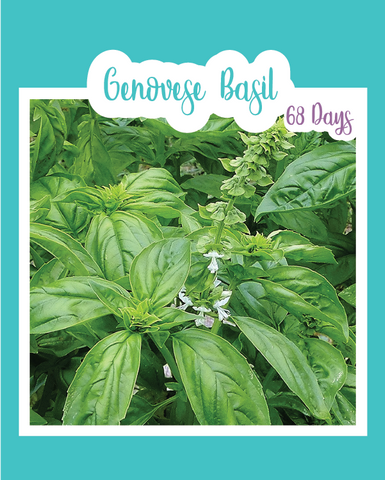
Tokyo Long White Bunching Onion
Non-bulbing onion type
Seed Count: Approx. 200 seeds
Days to Maturity: 70 days
Description: Tokyo Long White Bunching Onion is a non-bulbing, Japanese heirloom that grows bluish-green, 16-18 inch long, slender, mild tasting stalks. The 4-5 inch, pure white bottom part of the stalk has a delicious mild sweet flavor. It's perfect for garnishing finished dishes, adding to omelets, soups, stews, stir-fries, and salads. This variety is a pretty reliable producer, with moderate tolerance to bolting, and disease resistance. Tokyo Long White Bunching Onions are easy to grow, great for cut and come again harvesting, and can easily be grown in containers and small spaces. This variety does not multiply by dividing, and should not be over wintered.
How To Grow
Sowing: Since onions take a few months to mature from seed, gardeners with a short growing season should start their onion seed indoors. Plant seeds 1/2 in. deep in small containers, 2-3 months before the last frost date. Keep the soil moist and at room temp. As soon as seedlings emerge, provide plenty of light on a sunny windowsill or grow seedlings 3-4 inches beneath fluorescent plant lights, turned on for 16 hours per day, and off for 8 hours at night. Raise the lights as the plants grow taller. Most plants require a dark period to grow, so it's important that you do not leave lights on for 24 hours. Seedlings do not need much fertilizer, feed plants when they are 3-4 weeks old using a starter solution (half strength of a complete indoor houseplant food) according to the manufacturer’s directions. When the tops begin to flop over, cut them off to 3" to focus the growth on the roots. Four weeks before the last frost, or when the soil is at least 50 degrees F, transplant to a location in full sun, where you did not plant onions the previous year. Space the seedlings 6 inches apart in rows 12 inches apart ( I like to plant seedling in the gaps between the two rows. Just make sure you don’t plant them in a straight column. For example, between four onions, I’ll plant one directly in the center because I plant in containers and space is limited). For direct sowing, sow 3 seeds per inch a 1/2 in. deep in light, rich soil (Onions prefer a pH of 6.0 – 7.0.) and full sun. Thin the seedlings 2-6 inches apart, depending on the desired size. Thinned onions can be transplanted or used for fresh eating. In areas with warmer winters, onions may be grown as a fall or winter crop as well.
Growing: Onions need moisture, especially in their first several weeks of growth. They also need protection against weeds. Mulching onions can help with both moisture and weed control. Ample water is important for onions, because they are shallow rooted, and tend to dry out during periods of drought. Make sure to keep the tops dry. If they are constantly wet, they are more susceptible to disease. For companion planting benefits, plant onions with members of the cabbage family, lettuce, or tomatoes; avoid planting onions with peas or beans because members of the allium family can stunt their growth.
Harvesting: Bunching onions can be harvested anytime after 60 days. The longer they stay in the ground, the stronger in taste they get. If protected during the winter, plants will continue to bunch during the spring time for continued harvests. Bunching onions don't last long once cut, but I like to pre-cut mine, and freeze them to extend their shelf life. They don't even need to be defrosted, you can just add them to whatever you're cooking, or on top of hot soups, and they will defrost themselves. You can also dry your harvest and store them in airtight jars for later use. Onions need to overwinter before producing seeds. In warmer locations, simply apply a thick layer of mulch, and remove it in the early spring. In areas with very cold winters, pull up the onions and cut off half the stem, and store them at 32-40 degrees F, in a dry place until spring, when they can be replanted. Before planting, cut an X in the top of the onion to allow the stalk to emerge. The plants will flower and go to seed. Remove the seed heads when the seeds become visible, taking care not to shatter the heads, losing the seeds. Spread the heads out in a dry place with good ventilation, and let them dry for several weeks. Thresh out the seeds and store them in a cool, dry place for up to 2 years.




